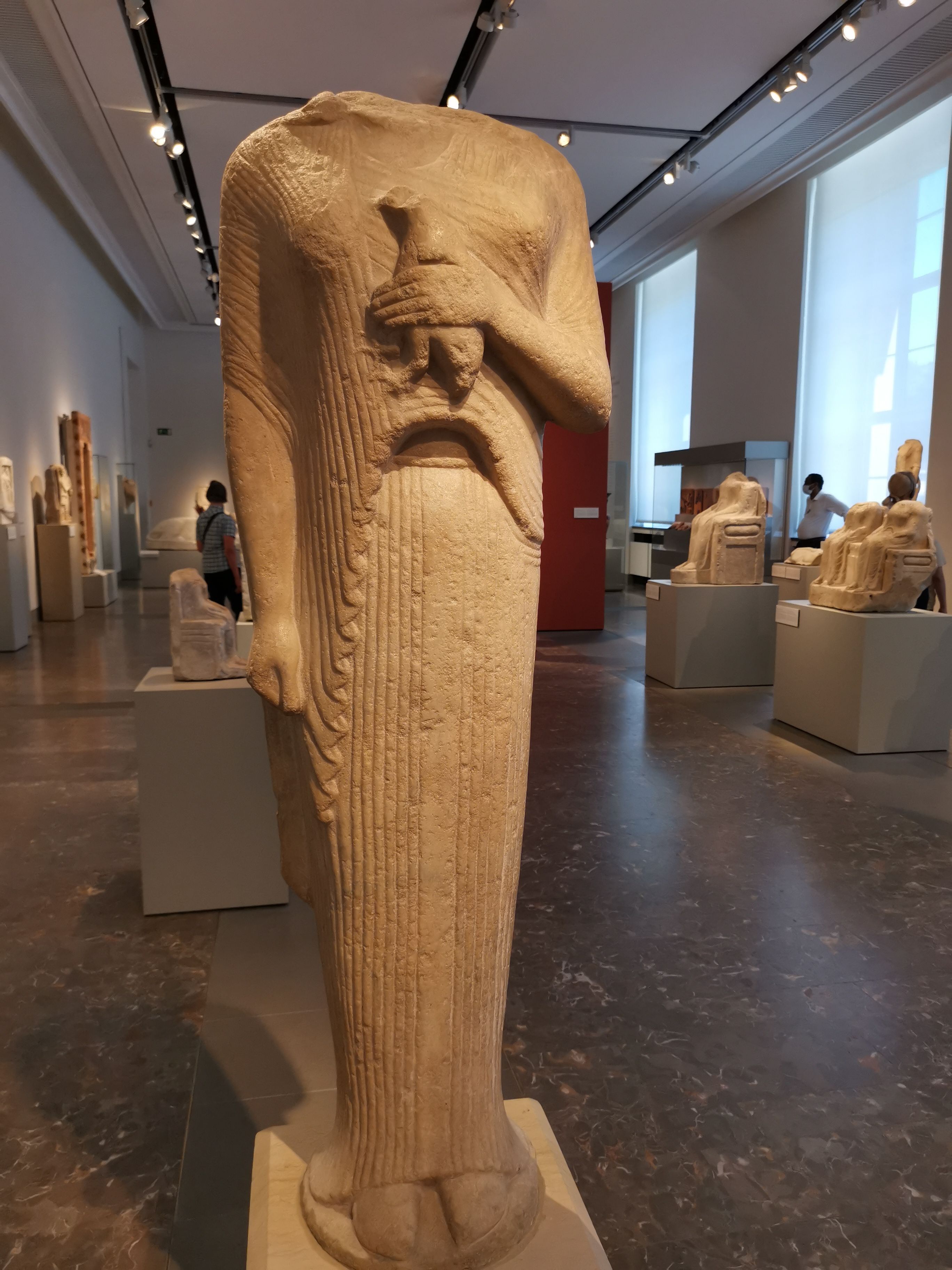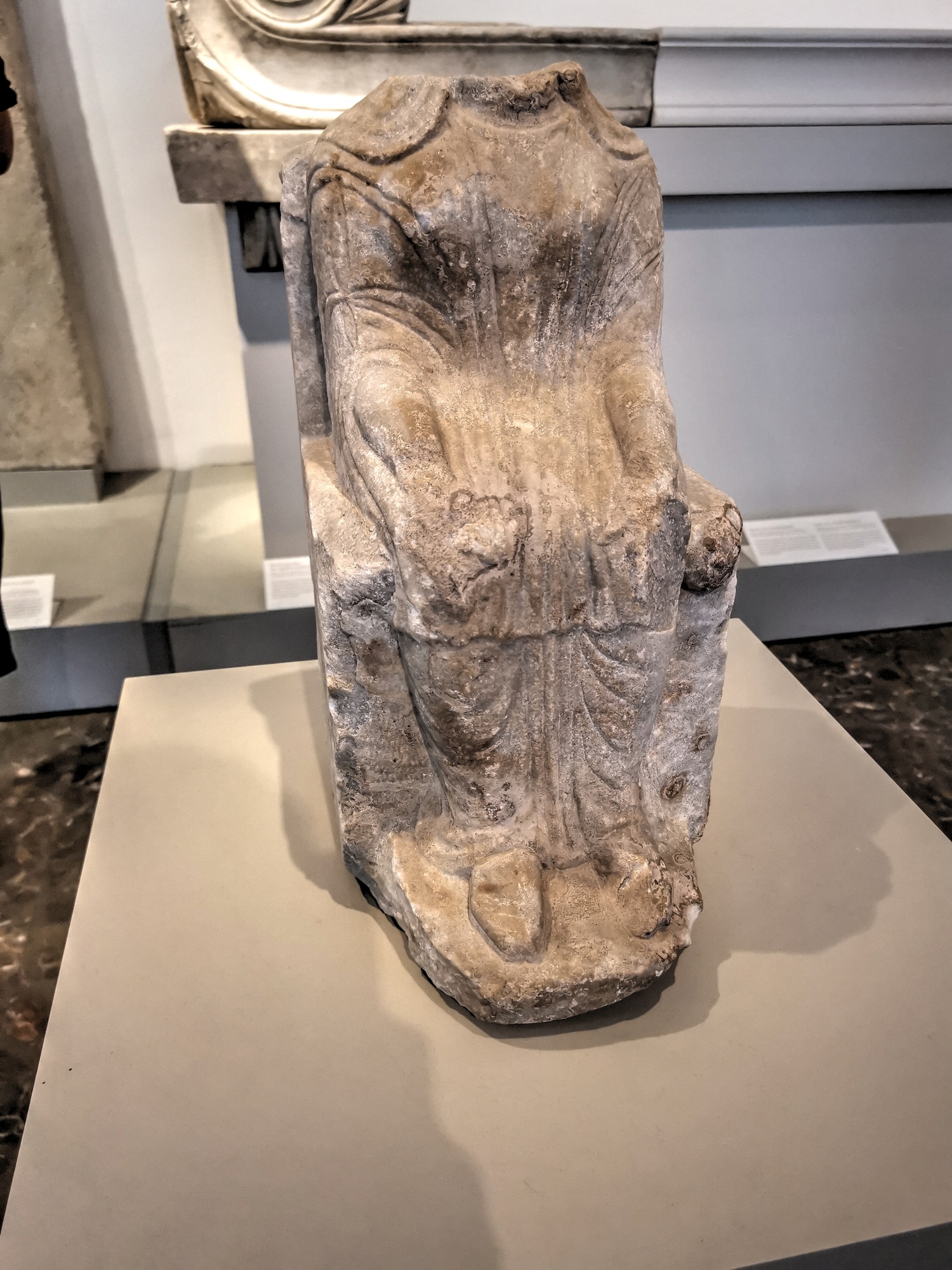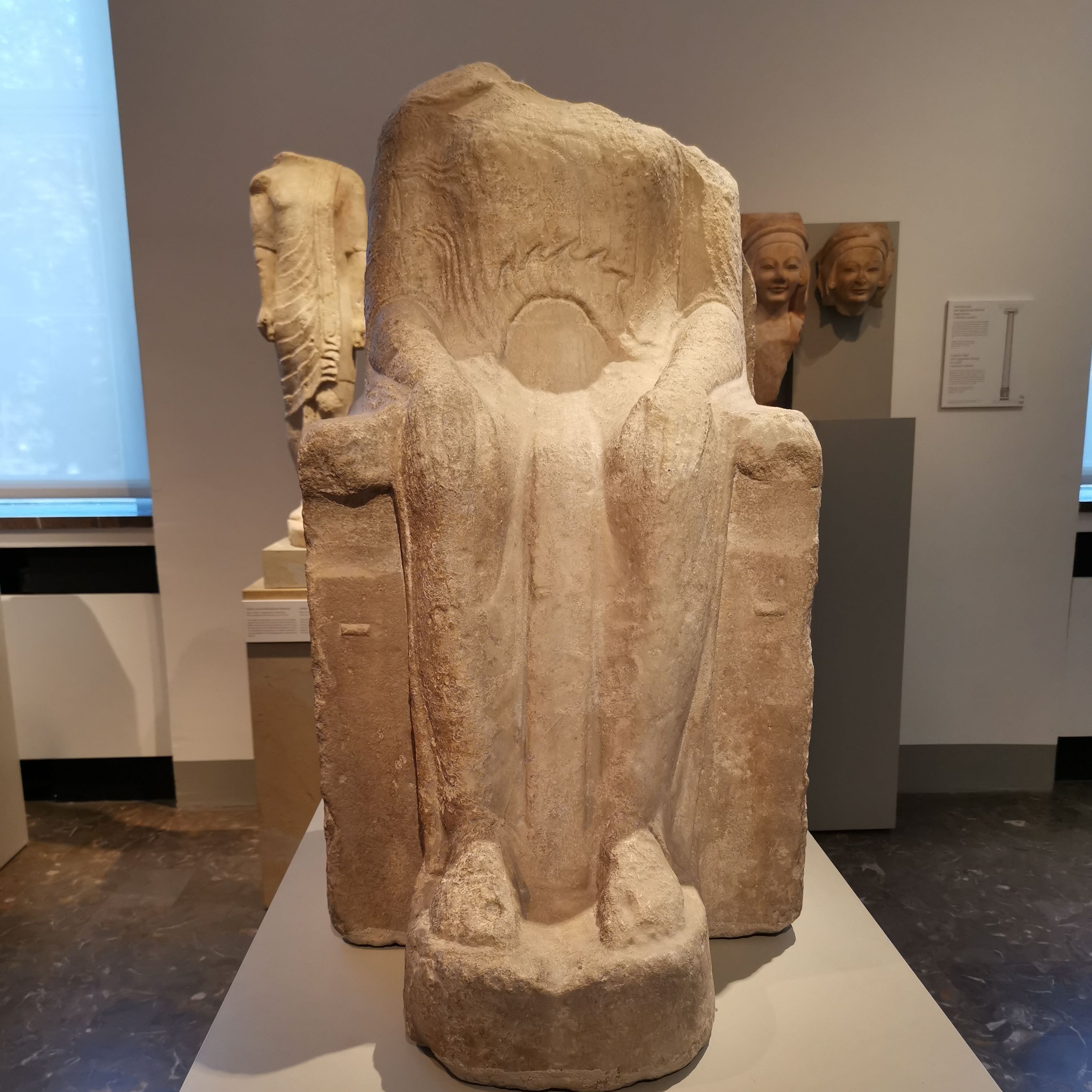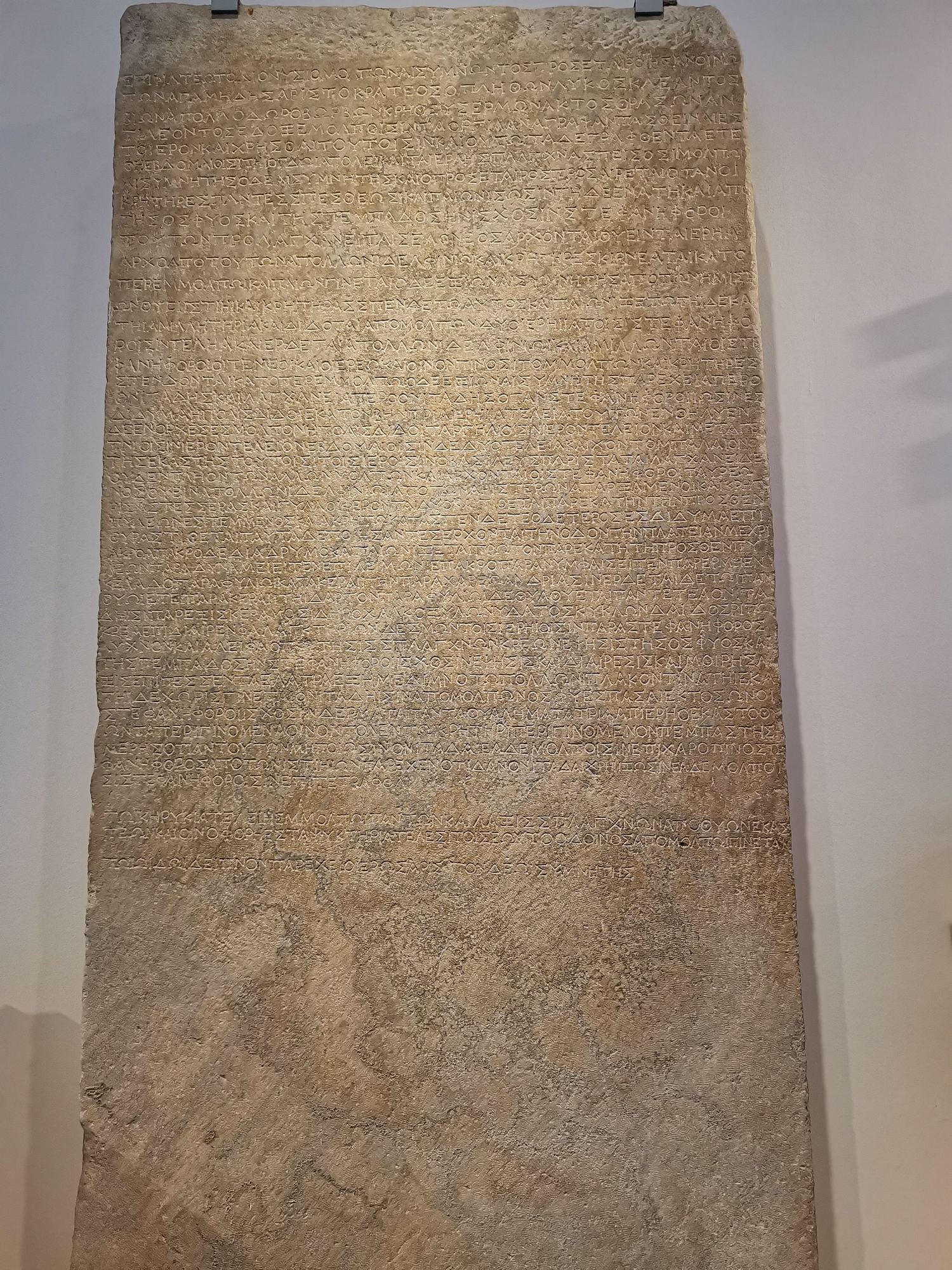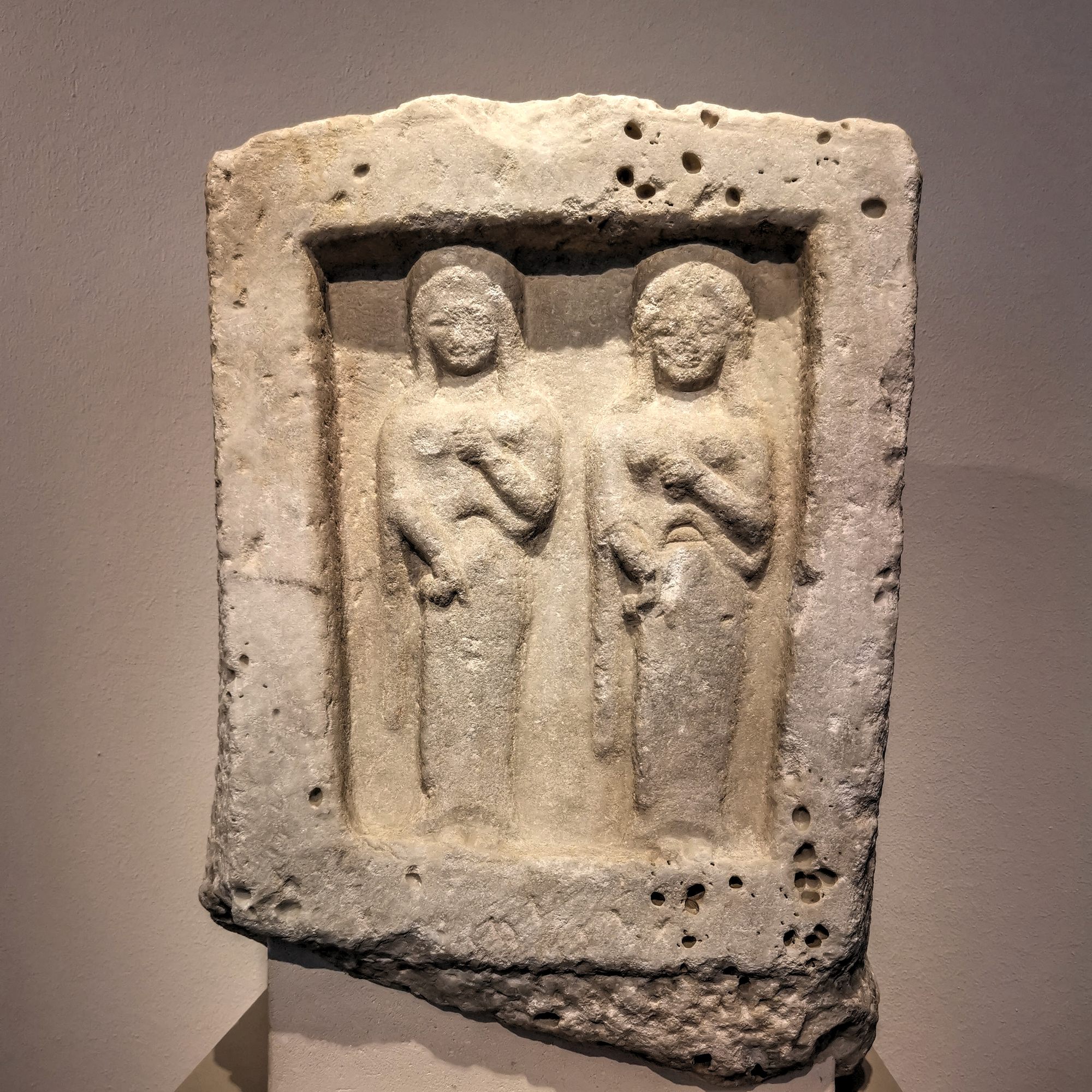The exhibits unearthed during the excavations in Miletus are scattered across numerous museums. In Turkey, the finds from Miletus are on display in the small local museum in Miletus, but also in archaeological museums in Izmir and Istanbul. However, taking into account the long and eventful history of Miletus, the collections displayed in the Turkish museums are surprisingly sparse. For instance, one of the most interesting objects - the Market Gate - was transported in pieces to Germany and reconstructed in the Pergamon Museum in Berlin. Moreover, there are also numerous other finds from Miletus on display in other museums, forming the famous Museum Island in Berlin. This publication looks closer at the artefacts presented in the oldest museum of this group - the Altes Museum.
- Fragment of a Cult Calendar
- Statue of a woman with a rock partridge as votive offering
- Statue of a woman with a partridge as votive offering
- Enthroned woman number 1
- Enthroned woman number 2
- Enthroned woman number 3
- Enthroned woman number 4
- Enthroned woman number 5
- Two enthroned women
- Altar side piece with sphinxes and rosettes
- Statutes of the Cult Association of the Molpoi
- Altar for burning offerings of Apollo Delphinios
- Cymas of a temple pediment
- Votive relief with two goddesses
- Votive relief with female figure
- Woman's head with veil
- Lion of Miletus
- Portrait of a Hellenistic ruler
- Torso of a dancing satyr
- Statue group: Dionysus and satyr
- Support of a marble table: Bacchus and his retinue
- Support of a marble table: Bacchus
- Support of a marble table: Athlete
Why are there so many finds from Miletus in Berlin and other museums abroad? The explanation goes back to the 19th century. The first systematic excavations in Miletus were initiated in 1873 by a French researcher, Olivier Rayet. He focussed on the theatre, and, above all, the ancient works of art to be found there. In fact, six statues came to light that were donated to the Louvre Museum in Paris.
His work was continued, from 1899 to 1911, by the German archaeologist, Theodor Wiegand. After he had successfully completed the excavation of Priene in 1899, he excavated parts of the ancient cosmopolitan city and trading metropolis Miletus, in cooperation with Hubert Knackfuss. He came across the Hellenistic-Roman layer with its magnificent representative buildings, including the famous Market Gate. Wiegand took half of the finds from this "old excavation" to the Berlin museums, as it had been contractually assigned to the German team by the Ottoman authorities. Thus, as they are now on display in the Altes Museum in Berlin, the information boards and plaques state that the artefacts come from the division of finds. One can notice, however, that the pieces displayed in Berlin are much more stunning than the ones left in the Turkish museums.
The Altes Museum building is located on the Museum Island in the historical centre of Berlin, Germany. It was constructed between 1825 and 1830 by the orders of King Frederick William III of Prussia, and its plans were drawn by Karl Friedrich Schinkel. The building is now a historical monument itself as a major example of German Neoclassical architecture.
Fragment of a Cult Calendar
Made of marble before 494 BCE, it was found in the sanctuary of Apollo Delphinios in Miletus. It belonged to a monumental cult calendar on the exterior walls of the Archaic Delphinion halls. The characters are evenly distributed like in a grid and the lines are to be read alternately left-to-right and right-to-left.
Statue of a woman with a rock partridge as votive offering
The torso of this marble statue of a girl was found built into a fortification wall (so-called "Goths' Wall") of the 3rd century CE along with other older sculptures, inscriptions, and architectural fragments. Originally, made around 540-530 BCE, it probably belonged to the inventory of a sanctuary in Miletus along with some of these spolia.
Statue of a woman with a partridge as votive offering
The marble statue, made ca. 550 BCE, was found in the area of the sanctuary of Artemis on the eastern terrace of the Kalabaktepe in the south of the city of Miletus. The young woman is holding a partridge to her breast. She wants to sacrifice the bird to the goddess. With its strict, self-contained form, the statue belongs to the oldest marble sculptures from Miletus.
Enthroned woman number 1
Due to her small size, the enthroned figure was certainly not a grave statue but a votive offering. The roughly smoothed rear side indicated that it was placed in front of a wall or in a naiskos (a temple-like building). The marble statue was made around 530 BCE. In the 3rd century CE, it was built into the "Goths' Wall" along other sculptures.
Enthroned woman number 2
This marble statue was made around 540-520 BCE and later built into the "Goths' Wall" in the 3rd century CE. The box-shaped throne goes back to ancient Near Eastern models and emphasizes the high social status of this woman. On the right side of the throne, one can see the remnants of a votive inscription deleted already in antiquity that can be explained by its re-use as a grave monument.
Enthroned woman number 3
This marble statue was made around 540-520 BCE. The head was covered with a veil, typical of the representations of women in Miletus. It was hit off and replaced by another head for re-use. On the right front, next to the legs of the seated figure, one can see the rough inscription ARTE(mis).
Enthroned woman number 4
The head of the block-like seated figure made of marble around 540-520 BCE was covered with a veil, the remains of which can be seen on the shoulders. Such headscarves can often be found in Archaic representations of women in Miletus. After it was damaged, its head was also replaced by using a roughly cut mortise.
Enthroned woman number 5
It was made around 540-520 BCE. After it was damaged, perhaps in 494 BCE when Miletus was sacked by the Persians, a new head was attached to the marble votive statue to be re-used perhaps as a grave monument. Plug holes with remnants of lead served to attach it. Clamp traces on the rear side are from its fitting into a late antique wall.
Two enthroned women
The group of women, made of marble around 540-520 BCE and conceived as a votive, was built into a wall to the south of the theatre in Miletus only in Late Antiquity. The more recent inscription on the rear side designates the location of a group of citizens (in the sanctuary?). The hole in the rest indicates its modern use as a fountain figure.
Altar side piece with sphinxes and rosettes
The marble panel from the end of the 6th century BCE was found near the theatre of Miletus. It was the left side of a small altar for burning offerings. Two of these panels with a sacrificial podium in between formed the core of the altar, which was raised one or two steps. The upper end consisted of an Ionic egg-and-dart profile with pearl bar and a slab. Volutes were probably on top.
Statutes of the Cult Association of the Molpoi
The inscribed stele was set up in the Sanctuary of Apollo Delphinios - the central city sanctuary of Miletus. The Hellenistic inscription made from marble around 200 BCE conveys a late Archaic text with more recent additions, containing the regulations of the cult association of Apollo Delphinios, the Molpoi, for the New Year's ceremony in the Delphinion and the subsequent procession to Didyma.
Altar for burning offerings of Apollo Delphinios
The marble structure is a partial reconstruction of the altar for burning offerings of the Sanctuary of Apollo Delphinios (the Delphinion) with original profile fragments and crowning volutes. The structural elements belong to the renovation of the archaic altar which was destroyed when Miletus was sacked by the Persians in 494 BCE.
Cymas of a temple pediment
Cymas were the members or mouldings of the cornice, of which the profile is an ogee, or curve of contrary flexure. Several clay pieces of a raking cyma from the roof of the Archaic temple of Artemis Kithone (around 530 BCE) in the sanctuary on the Kalabaktepe in the south of the city of Miletus have been preserved. They are decorated with a colourful Ionic architectural profile that originally ended at the roof ridge and eaves with large volutes.
Votive relief with two goddesses
This votive relief made of marble around 570 BCE was found in the area of the sanctuary of Artemis Kithone. In the deepened panel, the relief presents two women with long, belted chitons and small cloaks. The heads of the strictly frontally depicted figures are covered with a veil. They held no longer recognizable objects in their right hands raised to the breast.
Votive relief with female figure
The marble relief from around 575 BCE represents a woman with a relatively large head in a box-like frame. She wears a long chiton and a small jacket-like cloak. Her hair is covered with a veil with cap-like elements. The fragment belongs to the oldest representations of this Ionic female type in Miletus.
Woman's head with veil
This part of a marble statue made around 550 BCE was found within the sanctuary of Athena in Miletus.
Lion of Miletus
The lion, the heraldic animal of Miletus, can be frequently found among the votive offerings and tomb sculptures of the city. In their early renditions of lions, the Milesian sculptors were strongly influenced by Egyptian models. The magnificent beast was found in the so-called Lion Tomb at Kazartepe. It was made of marble around 560-550 BCE. The lion reclines like an odalisque, with a lowered head turned towards the observer. The excellently preserved lion and its counterpart guarded the tomb of a local noble family.
Portrait of a Hellenistic ruler
This partly preserved head of a young man with idealized facial features was found in 1903 near Market Gate of Miletus. Dating to around 150 BCE, it is understood to depict a Hellenistic ruler, due to the band in his curly hair. Certain classification is, however, not possible. Historically plausible suggestions are of an Attalid or Seleucid king.
Torso of a dancing satyr
The marble statue from 80-100 CE, stood in the façade of the nymphaeum. The satyr is characterized by the fur on the chest and the tail on the back. The meticulous removal of the genitalia and the application of two crosses on the chest can be explained by the rededication of the statue in Christian times.
Statue group: Dionysus and satyr
This marble group consisting of Dionysus and satyr was made around 160-170 CE in the tradition of Hellenistic prototypes. It stood in the basin of the lavish changing room of the Faustina Baths in Miletus. It shows the god Dionysus accompanied by a young satyr. Presumably under Christian influences, the genitalia of both statues were chiselled off in late Antiquity.
Support of a marble table: Bacchus and his retinue
This sculpture, made of marble in the 2nd - the 3rd century CE, is one of three very heavy and weatherproof figure-shaped table supports, which stood in the villa gardens. They were used to present precious objects and gave expression to the Roman luxury style of living. This particularly depicts Dionysus (called Bacchus in Rome) and his group, one of which is a satyr, possibly intoxicated and enjoying life.
Support of a marble table: Bacchus
This marble sculpture depicting Dionysus (Bacchus) is one of three very heavy and weatherproof figure-shaped table supports which stood in the villa gardens.
Support of a marble table: Athlete
This marble sculpture depicting an athlete is one of three very heavy and weatherproof figure-shaped table supports which stood in the villa gardens.




